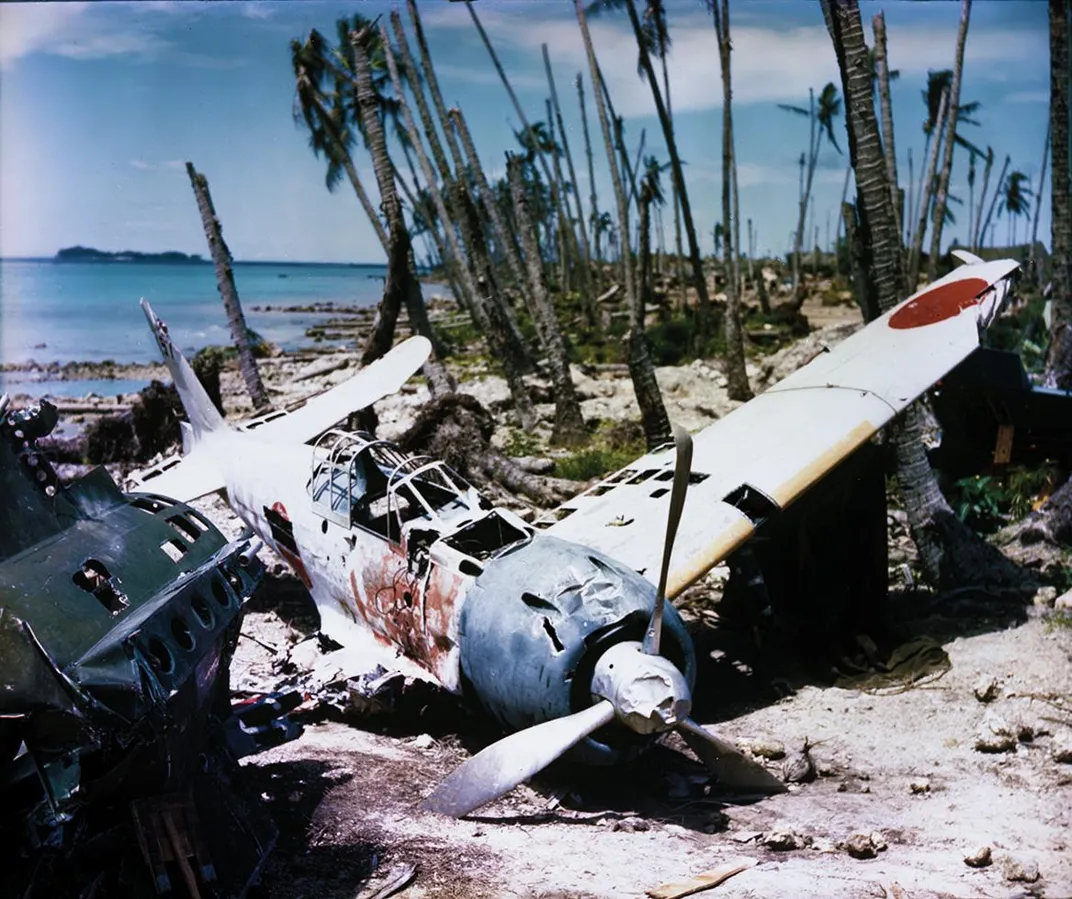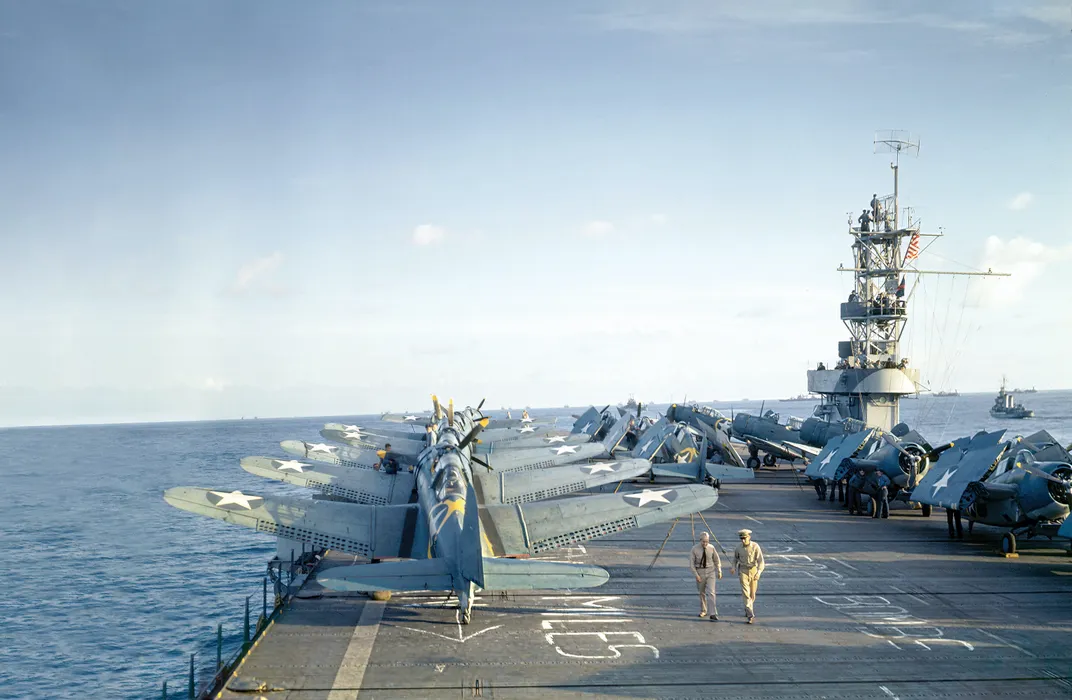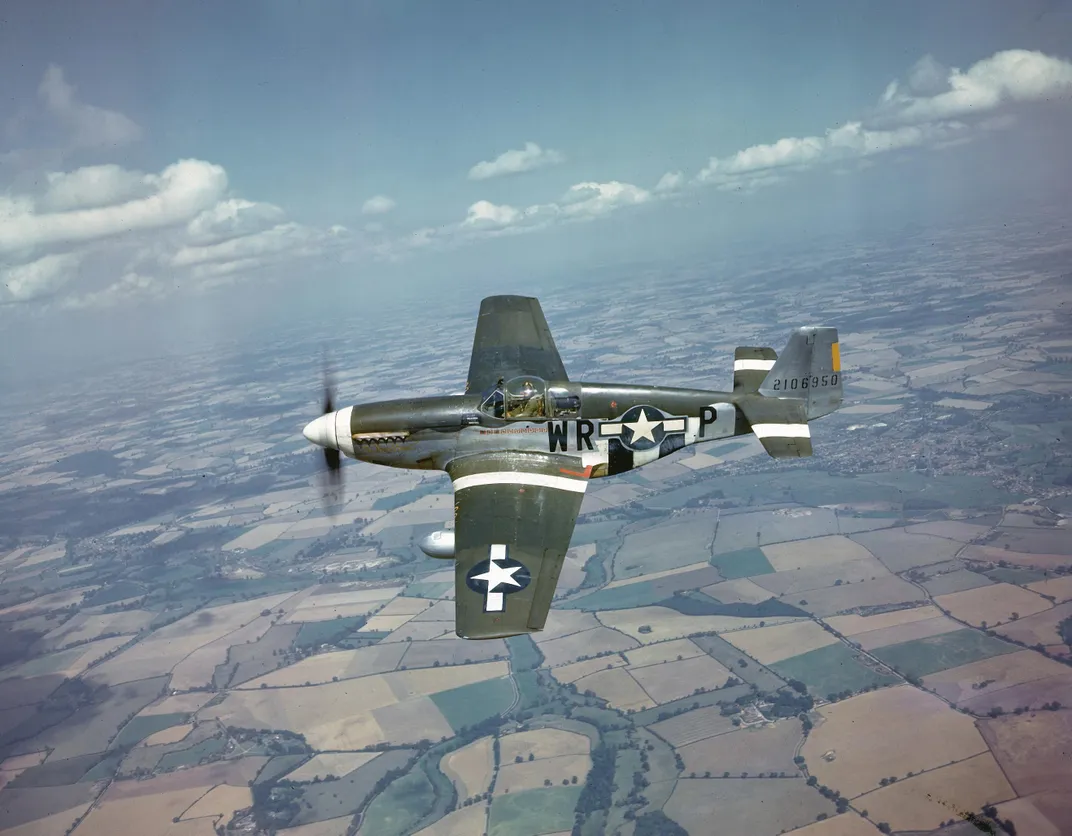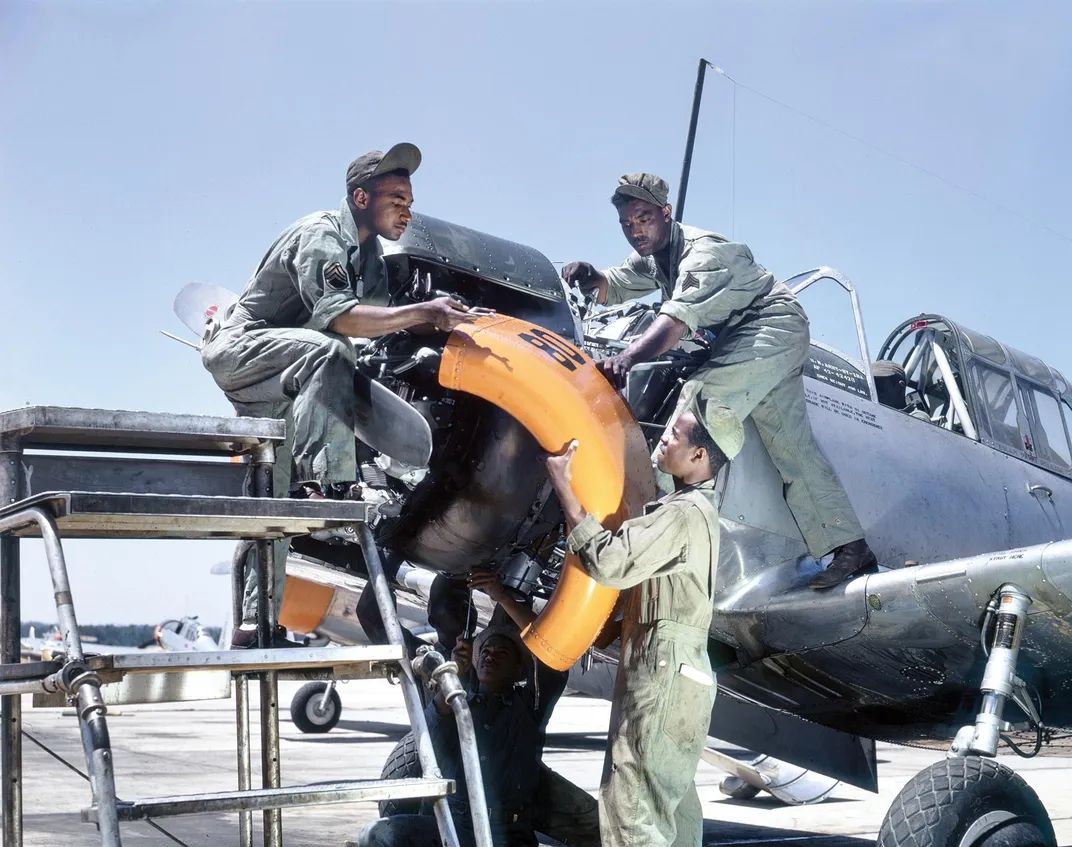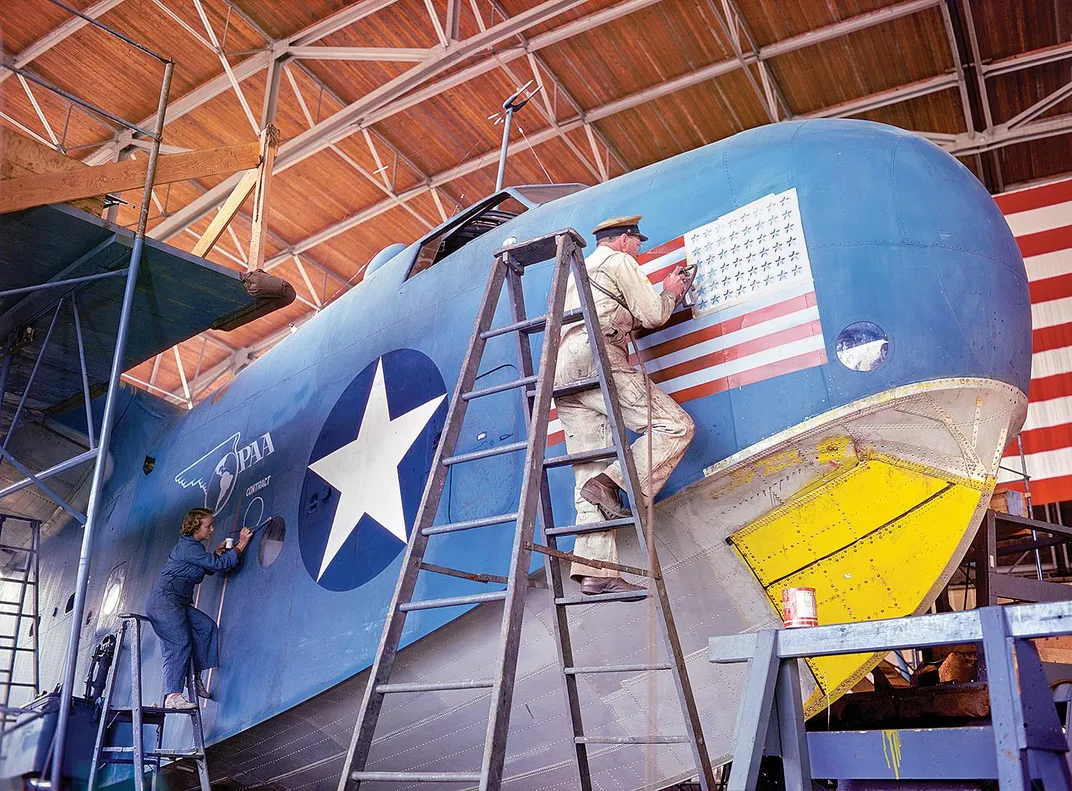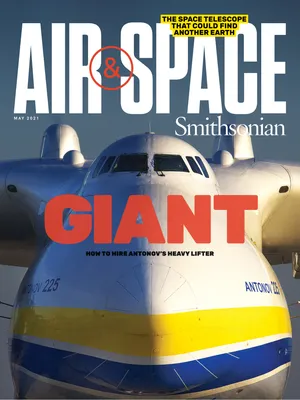World War II in Color
Thousands of photographs in government archives bring the war to life.
:focal(1871x2521:1872x2522)/https://tf-cmsv2-smithsonianmag-media.s3.amazonaws.com/filer/2c/d9/2cd9a43e-5d11-48bb-8ec0-f22a2083c126/05c_am2021_80-g-k-16216_live.jpg)
World War II is one of the most documented conflicts in history. Millions of photographs and miles of motion-picture film stock provide a rich visual record of its brutal violence and celebrate its martial purpose. Color photography, though not new, had only just become widely available when the war began in 1939. Color images of the war are not hard to come by, but they are considerably rarer than black-and-white images.
As the lived experience of World War II fades— because of the passing of those who participated in it and of those who observed it from the home front—the use of original color imagery provides a sense of immediacy for younger generations, for whom the war is often a vague and distant event from the last century. As part of the National Air and Space Museum’s ongoing renovation, which includes creating new exhibits in our flagship location on the National Mall in Washington, D.C. (see “The Wright Brothers & the Invention of the Aerial Age,” p. 28), Museum interns and volunteers are scanning World War II color photographs that will be used in a comprehensive display about Americans at war in the air. Large, high-resolution images of both undiscovered and well-known moments of the conflict will give visitors the opportunity to experience the war in a new light.
The scanning project is not without its challenges. The color transparencies are delicate, and the staff at repositories such as the National Archives have been forced to limit access to them, which in turn limits their broader use in exhibits and books. Another challenge was the long exposure requirement of Kodachrome film (ASA 10), which meant that only skilled government photographers with good equipment and a steady hand—along with the right light—were likely to create quality photos, and most likely not while in combat. As a result, photos of the front were often taken by amateurs in less-than-ideal conditions and with inferior equipment.
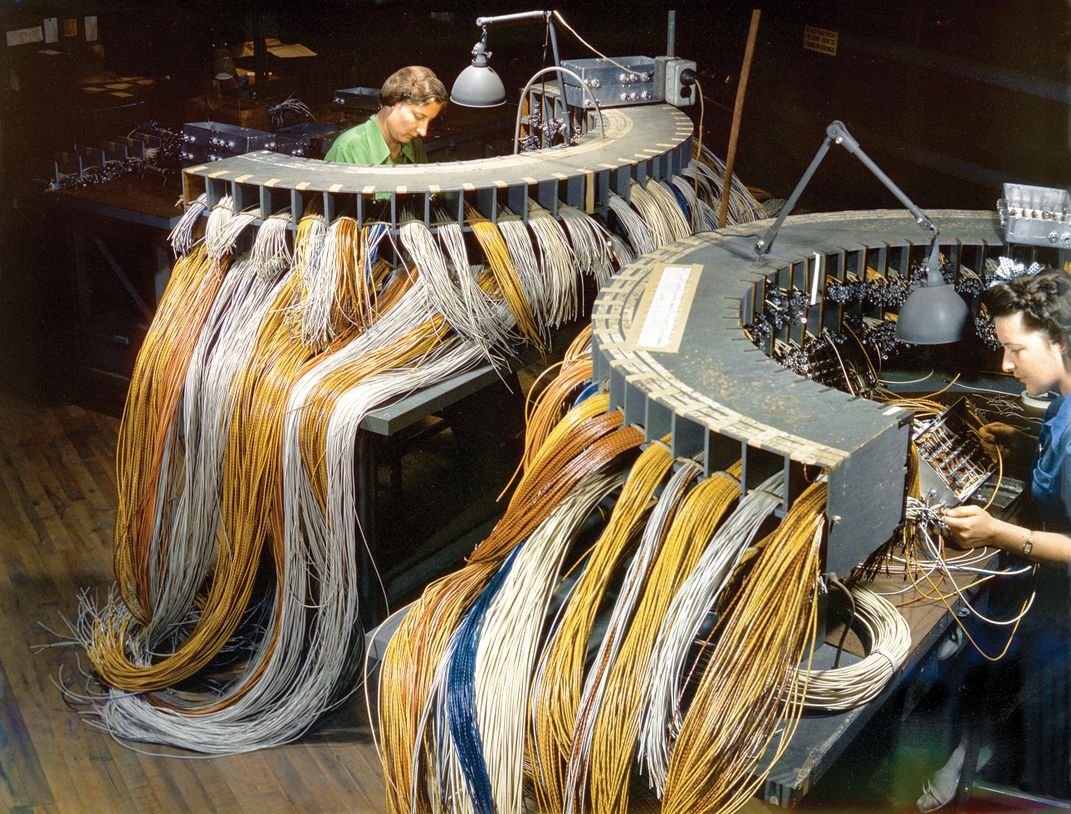
The images in this story are only a tiny number of the thousands being scanned, but they show the range of wartime experiences recorded. Several themes become prominent in these color photos. The first is the human face of the American experience. We see the thousands of young men and women who left their civilian lives to either support the war effort stateside or to fight overseas. Given the Museum’s aviation perspective, we focus on aircrew, ground crew, and the workers who built the aircraft. Each group had an enormous role to play, and for every person who went aloft, there were dozens of support personnel who made the flights possible.
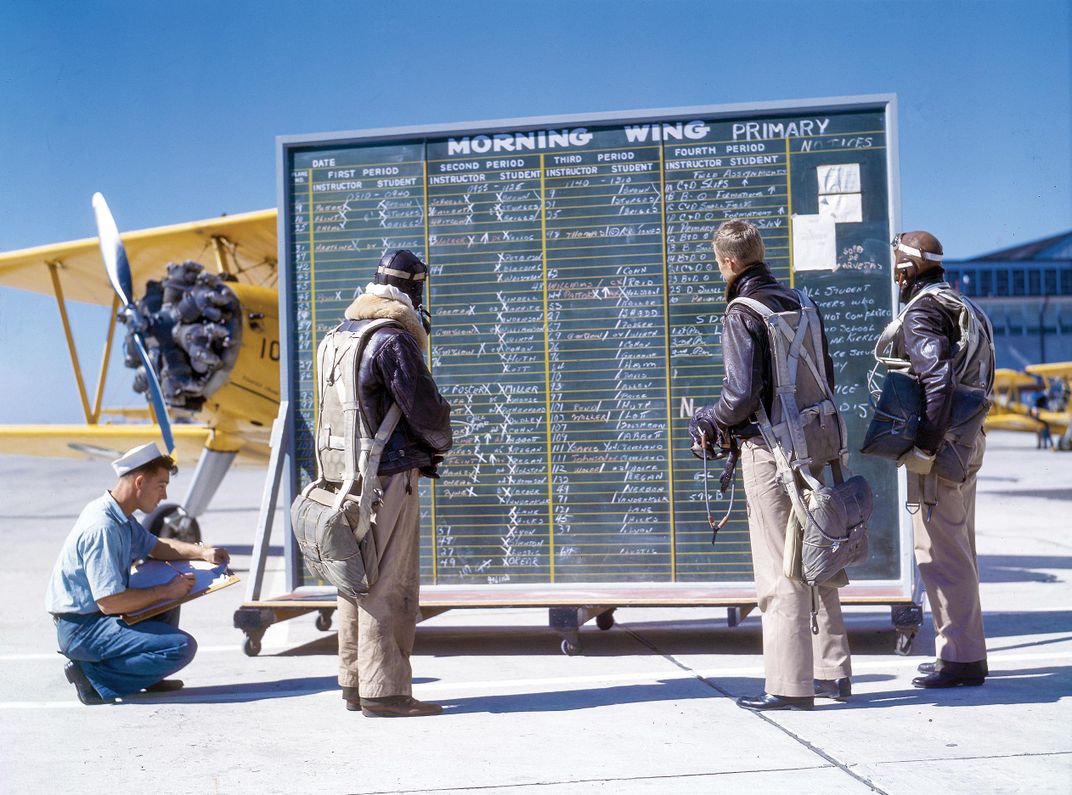
The images reflect another telling theme: Aviation is a system of technologies. Fighter aircraft and bombers, along with their crews, depended on critical infrastructure—from hangars, runways, and air traffic control to training equipment and new methods of production. Many may believe that advances like jet propulsion led to victory in the air, but the ability to carve out hundreds of new airfields in remote areas in mere days or weeks was often far more important.
Finally, Allies figure prominently in the images. Americans recall World War II in a way distinct from much of the world, as the United States avoided most of its destruction while significantly enhancing the country’s geopolitical reach. Aviation played a central role in the international partnerships that made this possible. Many of the more than 300,000 airplanes built in the United States during the war went to Allied nations to fight the Axis, while American aircraft were given access to operate from bases on six continents.
As an aviation historian, I’m grateful that so many of these color photographs have been preserved. Because of them, our memories of the war will never dim.
